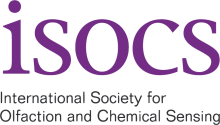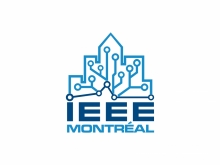Tutorials will be held on Sunday, May 28.
1) HIGHLY SENSITIVE AND SELECTIVE VOC SENSOR SYSTEMS BASED ON LOW-COST SENSORS
09:15 - 12:00
Organizer: Andreas Schütze (Saarland University)
Summary: Volatile organic compound (VOC) measurements are becoming ever more important due to stringent environmental regulations and increasing health concerns. Typical compounds with high health relevance are benzene, formaldehyde and tetrachloroethylene; in addition, VOCs are also highly relevant for odor nuisance monitoring. The specific challenge for VOC measurements are the low concentrations (for example, WHO suggests thresholds of 1.6 ppb for benzene and 81 ppb for formaldehyde) and the high selectivity required to discriminate hazardous (highly toxic or carcinogenic) or malodorous VOCs from less toxic or benign VOCs like ethanol. For the total VOC concentration, WHO suggest a limit value of 1 ppm, i.e. three orders of magnitude above the lowest threshold limit values for hazardous VOCs.
While even state-of-the-art metal oxide semiconductor (MOX) gas sensors and gas-sensitive field effect transistors (GasFETs) achieve detection limits below 1 ppb under well-defined laboratory conditions, there are several aspects which make testing and application of sensors for very low VOC concentrations highly challenging:
- Gas test bench: allowing reliable and reproducible control of ppb level gas mixtures;
- Sensitivity: can be achieved with optimized materials, but also suitable operating modes;
- Selectivity: can be achieved with multi-sensor arrays, virtual multi-sensors or fast GCs;
- Electronics: low-noise and high dynamic range required for high sensitivity and selectivity;
- Pre-concentration: to increase the sensitivity of the overall detection systems;
- Factory and on-site calibration: for high-volume production and local background adaption;
- Data analysis: signal processing and pattern recognition
These aspects will be addressed in the tutorial to allow the systematic development of VOC sensor systems based on low-cost sensors for air quality and odor monitoring.
Target audience: The tutorial addresses a wide range of participants from academia and industry, e.g., sensor developers wanting to address applications based on target VOCs, sensor system integrators interested in providing solutions for VOC monitoring, data analysis experts wanting to enter in the dynamic field as well as users of sensor systems to learn about new sensor technologies and sensing opportunities. Participants will gain a wider understanding of the importance of VOCs for various applications (outdoor and indoor air quality, industrial workplace safety, medical screening and diagnosis, odor monitoring) with emphasis on opportunities for low-cost sensor solutions for crowd sensing, wearable sensors and autonomous sensing in heterogeneous sensor networks. The tutorial will also address pitfalls in working with VOCs at very low concentrations to achieve reliable and valid results. Finally, the tutorial should provide contacts for future R&D collaborations in this field, i.e. bring together sensor developers, system integrators, data analysis specialists and users.
Schedule:
Lecture 1(45 min): Relevant VOCs, testing and reference methods
- VOCs: relevance for applications in air quality, health and odor, target compounds and concentrations
- Different approaches for testing and calibrating VOC sensors for sub-ppm concentrations
- Short overview of reference measurements and the need for them in sensor development
Lecture 2 (45 min): Gas sensor principles and system considerations
- Gas sensor principles for sub-ppm VOC measurements with emphasis on MOS and GasFET sensors
- Boosting sensitivity: materials, operating modes and pre-concentration
- Electronics for operation of highly sensitive MOS and GasFET sensors
- Achieving selectivity with multisensor arrays, virtual multi-sensors and combination with analytical approaches
Lecture 3 (45 min): Data analysis and system integration
- Importance of signal processing and pattern recognition to make full use of the system performance
- Overview of the data analysis workflow: pre-processing, feature extraction, feature selection, classification and validation
- Application example: Indoor Air Quality monitoring based on selective quantification of hazardous VOCs at ppb level
2) Mid-Infrared Integrated Chemical Sensors
13:30 - 15:15
Organizer: Pao-Tai Lin (Texas A&M University)
Summary: Modern infrared (IR) spectroscopy can quantitatively and qualitatively analyze chemical compounds, proteins, and micro-organisms without facing the complexity of labeling reagents and chemical indicators. However, instruments used today (e.g., Fourier transform infrared spectroscopy) are bulky bench-top tools unsuited for on-site/in-situ detection. Hence, to realize the full potential of mid-IR technology for sensing applications, several challenges remain:
- Scaling down into chip-scale devices
- Improving detection limits
- Reducing power consumption
- Increasing spectral resolving power, and
- Broadening the spectra of infrared sources
These challenges can eventually be overcome by multidiscipline approaches. This tutorial will illustrate technologies and strategies to advance mid-IR sensor-on-a-chip through advanced IR materials, innovative photonic device design, and nano-fabrication processes. In addition, this tutorial will highlight the development of CMOS materials for mid-IR photonic circuits since microelectronic materials with broadband mid-IR transparency are vital elements to create multifunctional optical sensor arrays.
Typically a mid-IR platform requires two or more thin film layers with different refractive indices, and sufficient film thicknesses to accommodate guided modes for mid-IR evanescent wave sensing. Thus, thin film materials that are transparent over the full mid-IR spectral region and whose refractive indices can be tailored are desired. Furthermore, to perform high-throughput chemical detection (for both gas and liquid phases), a platform composed of multiple sensing, light emitting and detecting elements is desired. A mid-IR photonic circuit that consists of waveguide array, beam splitting, wavelength-division multiplexing and micro-ring resonators appears to be an ideal sensing system for in-parallel detection because it is capable of simultaneously tracing numerous gas/liquid analytes and collecting absorption data from multiple waveguides. Hence, this tutorial will also illustrate chip-scale optical components to build chip-scale mid-IR spectrometers.
Target audience: The tutorial will benefit audiences from several disciplines
- Electrical and optical engineers interested in designing and fabricating mid-IR optical sensors
- Materials engineers working on mid-IR thin film and crystal growth
- Computer scientists developing chemometrics algorithms
- Biomedical engineers working on label-free analysis of biological samples
- Physicists studying nanophotonics and light-matter interactions
- Chemists studying molecular structure and spectral absorption
We expect this tutorials will also benefit industrial and government participants who utilize sensors in application areas such as medical diagnostics, environmental monitoring, oil & gas exploration, pharmaceutical & drug discovery, agriculture, transportation, manufacturing, and homeland security. Participants will gain a deep understanding of the importance of integrated mid-IR sensors for various applications (chronic disease monitoring, outdoor and indoor air quality, chemical screening, industrial workplace safety, medical diagnosis, odor monitoring) with emphasis on the opportunities for low-cost CMOS sensor solutions for wearables and autonomous monitoring and systematic integration of multifunctional sensor array.
Schedule:
Lecture 1(45 min)
- Mid-Infrared absorption: Molecular vibration & rotation; chemical functional groups: characteristic absorption & fingerprint absorption
- Sensing mechanisms: Transmission; attenuated total reflectance; evanescent wave detection for photonic circuits and fibers sensing; nano-slot waveguide and micro-resonators for photonic circuits sensing; opto-fluidics
Lecture 2 (45 min)
- Mid-Infrared compatible materials: CMOS (thin film) materials for planar mid-IR photonics; chalcogenides; optical filter materials
- IR sources and detectors materials: light sources (nonlinear optics, quantum cascade lasers, LED); light detectors (Mercury cadmium telluride, quantum well infrared photodetectors, III-V group, 2D-materials)
- Micro-spectrometers: system components; active sensing algorithms
- Applications: health diagnostics; explosives
3) SOURCE SEPARATION FOR CHEMICAL-PHYSICAL SENSING
16:00 - 17:45
Organizers: Leonardo T. Duarte (University of Campinas, Brazil) and Christian Jutten (University of Grenoble, France)
Summary: Physical-chemical sensors, such as ion-selective electrodes, gas sensors and spectrometers, are often prone to selectivity issues. Therefore, when dealing with such devices, one often faces the problem of un-mixing the observed signals.
Among the different strategies to address the selectivity issue, a recent one considers the application of blind source separation (BSS), a signal processing tool that aims to separate a set of original signals (sources) from a set of mixtures of these sources. These mixtures can be acquired, for instance, by an array of sensors that are not necessarily selective. Moreover, BSS is conducted in an unsupervised fashion and, thus, does not necessarily rely on calibration points.
There are different BSS approaches. The classical one is known as independent component analysis (ICA). ICA is a multivariate-based method that, in contrast with principal component analysis (PCA), exploits higher-order statistics of the observed signals. The central assumption in ICA is that the sources can be modeled as independent random signals.
More recent approaches to the source separation problem include methods based on Bayesian inference, non-negative factorization, and sparse component analysis. These approaches are not necessarily restricted to the case of independent sources; thus, they are well suited to problems involving physical-chemical signals, such as those found in spectroscopic analysis and in electrochemical sensor arrays.
In this tutorial, a broad overview of above-mentioned BSS methods will be provided. We shall discuss several interesting features of BSS, including the possibility of processing data acquired by a chemical sensor array by considering only a few calibration points. In addition to methodological aspects, we shall present applications of source separation to spectral data and ion-selective electrode (ISE) arrays.
Target audience: The target audience comprises researchers from both academia and industry belonging to different disciplines, e.g. engineers, computer scientists, and chemists. The required background is elementary statistics and notions on multivariate data analysis (e.g., PCA). After the talk, attendees will be able to:
- Understand the principles of blind (unsupervised) source separation (BSS) methods
- Understand the main BSS approaches (ICA, NMF, Bayesian, etc);
- Apply BSS methods to process information acquired by chemical sensor arrays.
Schedule:
Lecture 1 (45 min): Introduction to blind source separation
- The blind source separation problem (BSS)
- Linear and nonlinear mixing models
- Solutions based on independent component analysis (ICA)
- Second-order statistics methods
Lecture 2 (45 min): Advanced BSS methods and applications in physical-chemical sensing
- Going further: non-negative matrix factorization (NMF)
- Going further: Sparse component analysis (SCA)
- Going further: Bayesian source separation
- Applications of source separation in spectral data analysis
- Applications in ion-selective electrode (ISE) arrays



